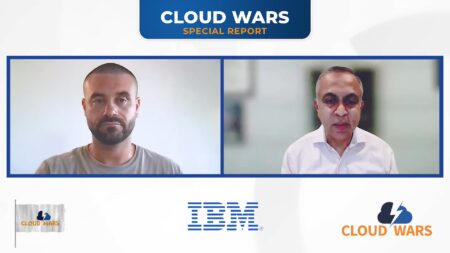The rush to the cloud is on as businesses of all shapes and sizes are racing to deploy modern technologies to take them into the digital economy.
As that dramatic overhaul takes place, business and IT leaders are finding that networking is once again becoming a strategic imperative. Here’s why:
- Most businesses have either already embraced multi-cloud environments or will be doing so very soon. They don’t want to go with a single provider, but at the same time the data within the various clouds most be accessible in real-time and with rock-solid security from one end of the enterprise to the other. So, networking is once again becoming a strategic imperative for businesses—particularly networks built and optimized for a multi-cloud world.
- In the same way, most businesses have embraced hybrid cloud to ensure they can choose the right blend of on-premises systems, private clouds, and public clouds to meet their unique needs and deliver the greatest business value. That all sounds great in theory, but the real-world execution requires networks with world-class security, reliability and performance to ensure those very different IT environments can all operate smoothly, be managed from a single view, and deliver the nimbleness every business needs today.
- The world of remote work is upon us, and the work from home (WFH) revolution looks like it will become permanent for tens or perhaps hundreds of millions of workers around the world. To handle this wildly distributed workforce, networks need to be built and optimized for this new reality.
- Speed is more vital than ever before to businesses. They need to be able to engage with customers in whatever manner those customers choose, and to do so with real-time insights into the customers’ latest purchases, inquiries, interests, and more. And traditional networks were never meant to deliver that type of performance.
- In our mobile world, application delivery is more critical than ever before—any delay in giving mobile consumers or businesspeople the access they need is an opportunity for a competitor to cut in line with an available alternative. Can your network handle this type of modern performance standard?
- Workloads that were hunkered down within the same systems for a decade or two are now being uprooted and moved to the cloud—and those moves must be made almost instantaneously with zero room for error, data loss, or downtime.
- As many businesses reconfigure their data-center footprints—closing, consolidating, and modernizing—the need for consistent and totally reliable networks becomes a top priority. And on top of that, all of those data centers have to be able to seamlessly connect with a steadily rising number of clouds being deployed by businesses—and there’s zero room for latency.
Jeff Frick and I touched on a number of these key takeaways in a post-Citrix Summit Series discussion on theCUBE.
Recommendations to Survive and Thrive in the Public Cloud(s)
To help IT and networking teams handle these unprecedented and incredibly urgent demands, Citrix has put together a 6-point survival guide to help businesses manage these challenges with maximum confidence and minimal disruption. Called 6 Reasons to choose Citrix ADC for public cloud, the Citrix roadmap includes the following recommendations:
- Achieve operational consistency across clouds. The Citrix Application Deliver Controller (ADC) uses a single code base that enables business users to easily move applications as well as ADCs from public clouds to private clouds and back as needed. And, with Citrix’s open technology, there’s no concern about the public-cloud lock-in that some vendors deploy.
- Have holistic visibility across clouds. Citrix Application Delivery Management (ADM) consolidations your management of apps into a single view and eliminates the fragmented management approaches that cause delays and increased cost.
- Establish consistent and comprehensive security. In a world where cyberthreats are more prevalent and more dangerous, Citrix helps you establish a single security posture across all your apps and cloud environments. Less complexity, more confidence.
- Auto-Scale to meet unforeseen demand. Users can focus on delivering enhanced business outcomes because the Citrix ADC solution scales backend resources and provisions new virtual instances as needed.
- Allocate capacity rapidly where it’s needed most. You can move your licenses among your ADCs across public and private clouds to give you more flexibility, nimbleness and speed, which are essential ingredients in the digital economy. As your workloads move across clouds—which will happen more and more frequently—your licenses move as well.
- Get a simple and predictable bill. Nobody likes surprises—and Citrix gives you control over being able to understand very clearly what you’re using and what you’ll have to pay.
As the world moves faster than ever before, your networks need to be able to remain in lockstep with the head-spinning changes going on all around us. We hope this survival guide from Citrix helps, as well as the other on-demand content and resources available from the Citrix Cloud Summit.
Have your own questions? Join a live Q&A on Twitter on October 15th with Citrix executive vice president and chief product officer PJ Hough. He’ll be covering cloud migration, enablement for new ways of working, app and data security, and more. You can submit questions beforehand at https://twitter.com/i/events/1311622614595457024.
This article is brought to you by Citrix.








